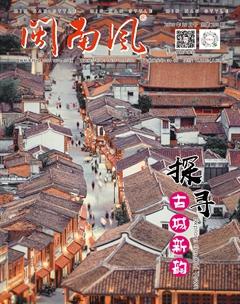The past and present of Old Town
This is a city that takes off. Its development and changes are obvious and changing with each passing day, which has a profound impact on peoples lives.
At the same time, the Old Town in this take-off city is increasingly revealing its cultural implication. In the misty morning and twilight, the temple of the Tang Dynasty, the state school of the Song Dynasty, the ancestral hall of the Yuan Dynasty, the memorial archway of the Ming Dynasty, the old house of the Qing Dynasty, and the streets and corridors of the ROC came into our horizons and memories.
Zhangzhou, founded in the second year of Chuigong reign in the Tang Dynasty (686), has a history of more than 1300 years. It is the second batch of national historical and cultural cities announced by the State Council in 1986, known as "seaside Zoulu". Zhangzhou, the birthplace of Minnan culture and one of the main ancestral places of Taiwan compatriots, is listed as an important part of the first national cultural and ecological reserve in China; it is an important part of Minnan cultural ecological protection zone.
The protection pattern of the famous historical and cultural city of Zhangzhou includes "one city and six blocks", that is, one historical district, six historical and cultural blocks and areas. The ancient city displayed in “Minnan Style” is the Tang and Song sub-city in the historic city, that is, which is also the inner city, established and preserved in the Tang and Song dynasties.
The Old Town is located on the north bank of west creek of Jiulong River, with a protection area of nearly 800 mu and a core reserve area of about 315 mu, which is the quintessential core part of the famous historical and cultural city of Zhangzhou. Among them, the historical and cultural district of Taiwan Road-Hong Kong Road was announced as the first batch of "Chinese Historical and Cultural blocks" by the Ministry of Housing and Construction and the State Administration of Cultural relics. In 2004, it was awarded the "Honor Award of UNESCO Cultural Heritage Protection Project in the Asia-Pacific region".
The Old Town of Zhangzhou is still a "living thousand-year-old town", and there are still more than 17000 residents. There are also seven statelevel intangible cultural heritage projects, such as puppet carving, puppet show, Xiang opera, Jin song, woodblock painting, Cai Fumei drum workshop, and Babao inkpad. In the Old Town, there are three national key cultural relics protection units, namely, Zhangzhou Confucius Temple, Bigan Temple and Stone archway, and two provincial cultural protection units, namely, the former site of the Fujian Provincial CPC Committee and Jian Dashi Sanctuary, ten municipal cultural protection units, including the ancient city hall, east-west bridge and the moat of Song dynasty, as well as 630 historical buildings, including a large number of buildings related to Taiwan and overseas Chinese, such an architectural museum that learn widely from others.
Since the end of 2014, the Zhangzhou Municipal CPC Committee and Municipal Government has launched the first phase of the Old Town protection and construction project, insisting on the combination of tradition and innovation, using the integration of history and humanities as the starting point, and has achieved significant results in stages. The thousand-year-old town glowed with new appearance and splendor, which has attracted widespread attention and love from all walks of life.
Today, the Panchi of the Ming Dynasty outside the Confucius Temple has rebuilt. The water surface shimmering, people can imagine that the bells and drums of the Confucius Temple and the sound of books from school came through at the same time, even Zhu Xi smiled from a distance. Some things are taken away by the wind and brought back by the wind. We walk and meditate in the Old Town, feel the ripples of the wind, breathe with the same rhythm as the Old Town, and get a kind of old time.
Even if things have changed, over the Old Town, the moon is still the same as those years, calm and deep.

